H. P. Friedrichs (AC7ZL) Homepage
My Books
Instruments of Amplification
Gallery 1
Here, you can take a look at images associated with the projects appearing in Instruments of Amplification.
This is an example of an electro-mechanical amplifier. I call this one the "Microphonic Relay." This instrument is built from pieces of an old telephone headset, copper pipe fittings, some threaded rod, a bit of steel, and a wooden base.
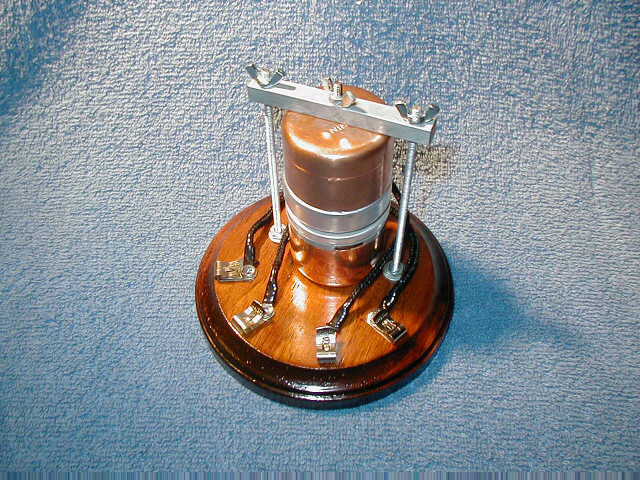
The Microphonic Relay is so simple to build, it's feasible to build several of them. In use, they can be cascaded, one after the other, to build a chain that produces more amplification than any one instrument could alone.
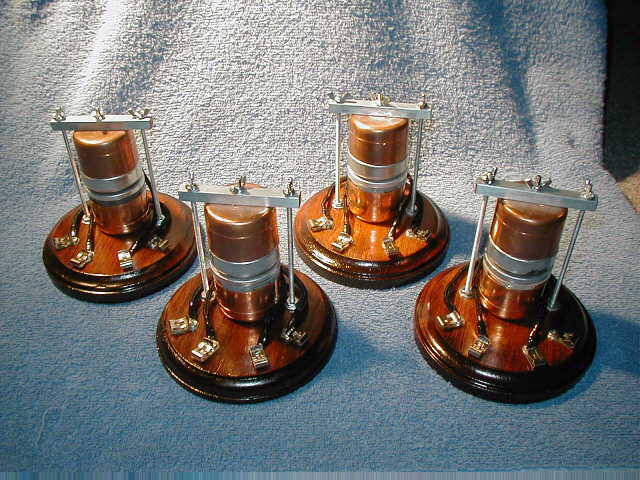
This is a closer look at the cluster of Microphonic Relays above. I admit it, it's an attempt to produce an "artsy" image.
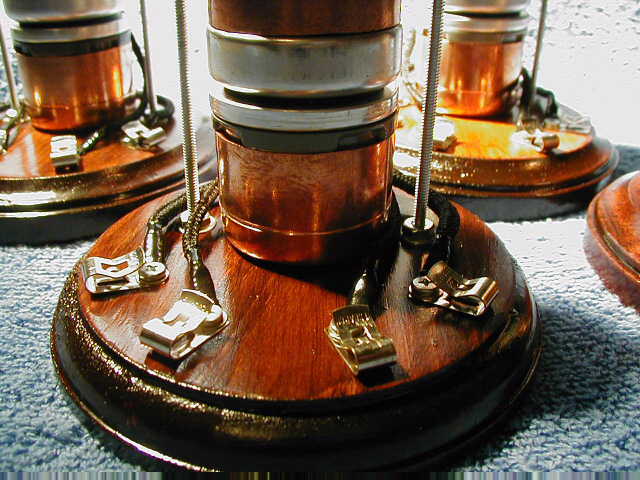
This represents one of my initial attempts at building an electromechanical amplifier, a design that evolved to become the "Balance Beam" amplifier. To your left, you can see a pair of voice coils (harvested from the ringer mechanism of some old desk phones) and a stack of bias magnets removed from some old cabinet catches. The floor of the tin can serves as a diaphragm. To the right, you make out one of the carbon contacts, which was harvested from a flashlight battery.
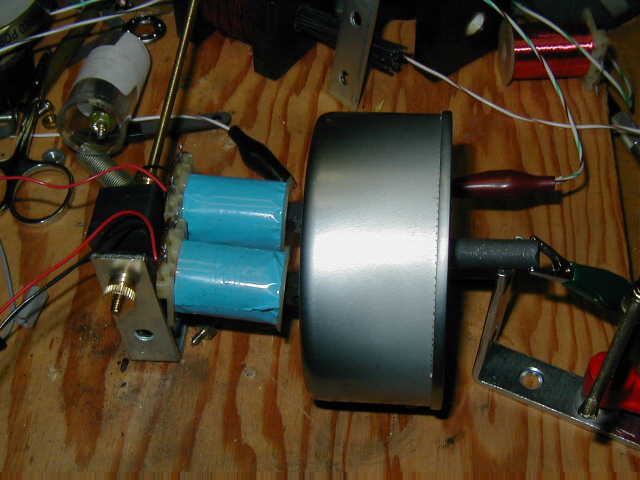
Inspired by the Brown Amplifying Relay, this instrument is an extremely sensitive electro-mechanical amplifier, I call the "Balance Beam Amplifier." Carbon and graphite electrodes, brought into contact by a delicate balance and modulated by the vibration of a steel diaphragm, this device is capable of significant power gain.

I experimented with several ways to produce vibration-sensitive capsules. This one uses turned carbon cylinders, one fixed and one moveable, fitted to the interior of a section of a glass blood serum tube. The space between the cylinders is filled with polished carbon granules.

This shows a version of the glass vibration capsule in operation. The left side of the capsule is held rigid. The right side is attached to a metal reed which is mechanically influenced by the magnetic field of voice coil just off to the right.

This represents a collection of vibration-sensitive carbon capsules that I tinkered with.
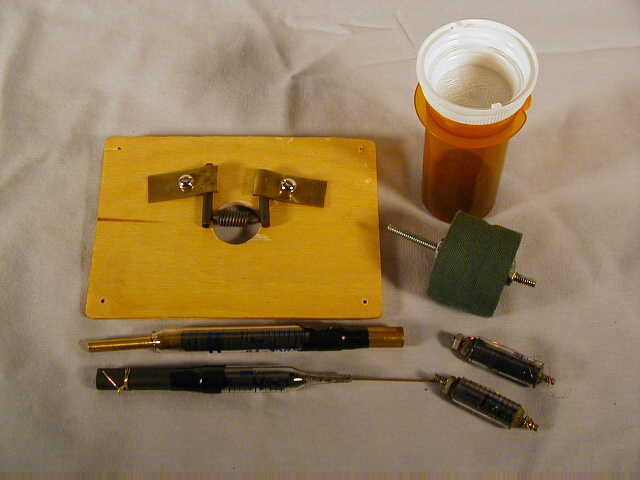
Transformers may be used to match the drive characteristics of an energy source to the characteristics of a load. This is a clever impedance matching transformer wound on sewing machine bobbins and cored with strands of iron wire
.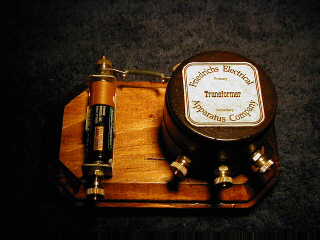
Glow tubes are fun to play with, and have some use in helping to gauge the performance of your vacuum system. This well-worn tube was made from an old spice bottle. Note the reddish-brown deposition toward the left end of the bottle. This is a copper film that was deposited on the glass through the effects of sputtering. It's more or less transparent, yet it conducts electricity! Nifty. Click here to see a brief movie of the glow tube in operation.
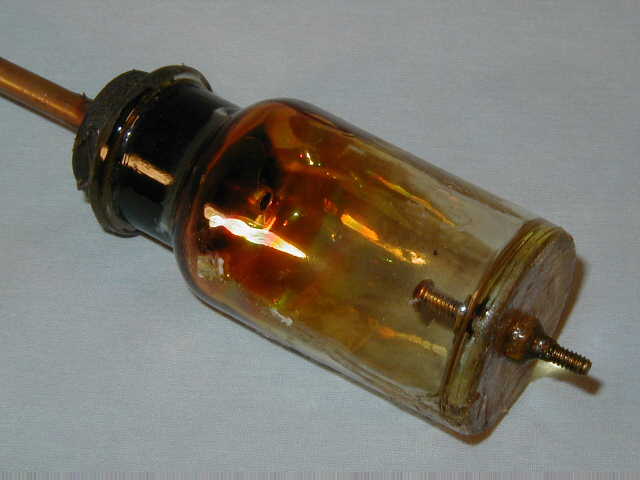
This is what I call the "Bell Jar Audion." Modeled after the Audion of old, this tube features planar construction, brass electrodes, and a custom feed-throughs which bring signals into the interior of the bulb.
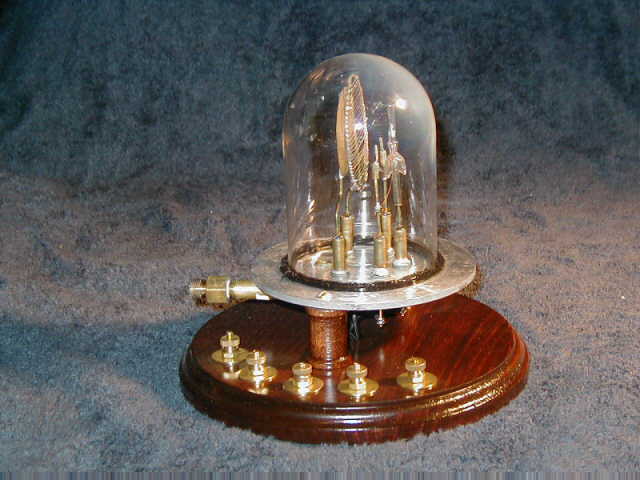
Here's a neat shot of the Bell Jar Audion in action during initial testing. That brilliant white you see is caused by the filament.
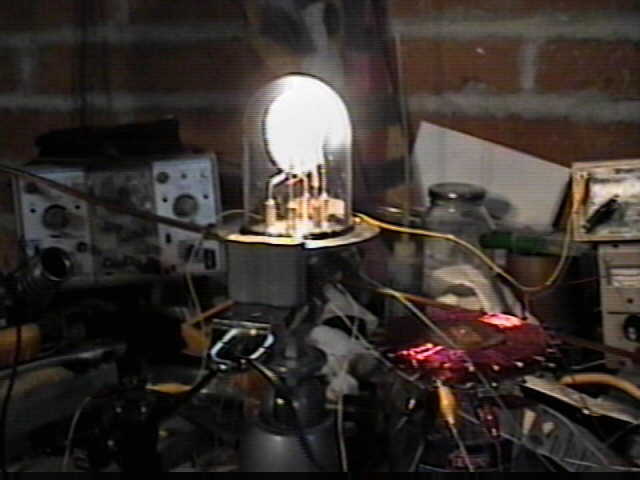
This is a closer view of the audion in operation

This is the second in a series of thermionic triodes, based on votive glass, that's featured in the book. I call this one the "Tennis Ball" triode because of the overall appearance of the glass globe. Notice the coaxial arrangement of internal electrodes.
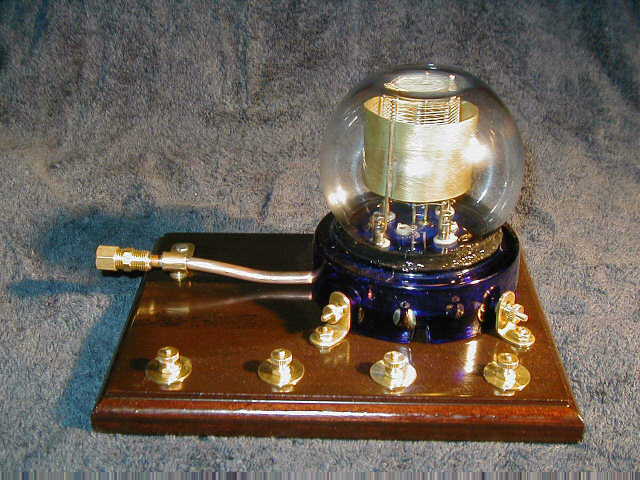
Click here to advance to Gallery 2
(revised - 11/03/2005)



